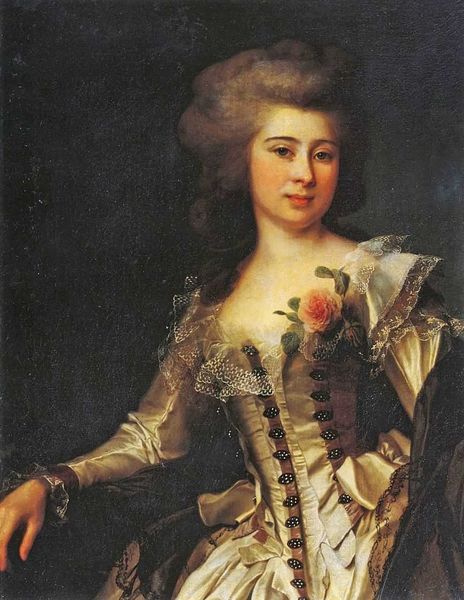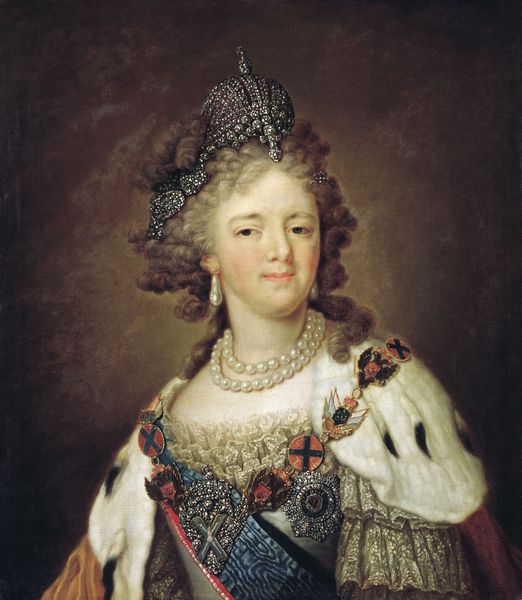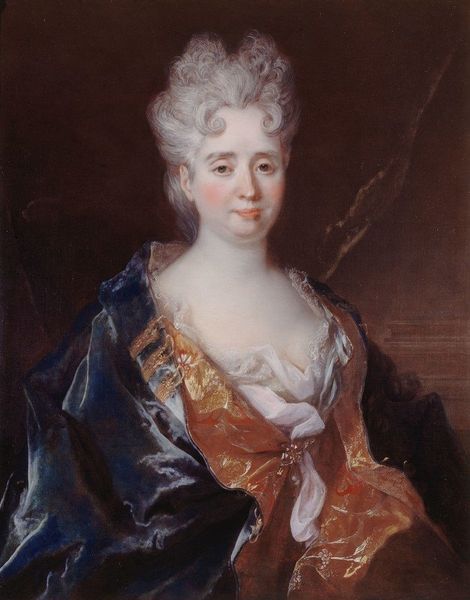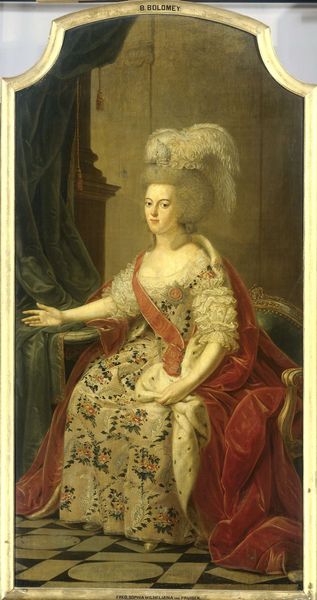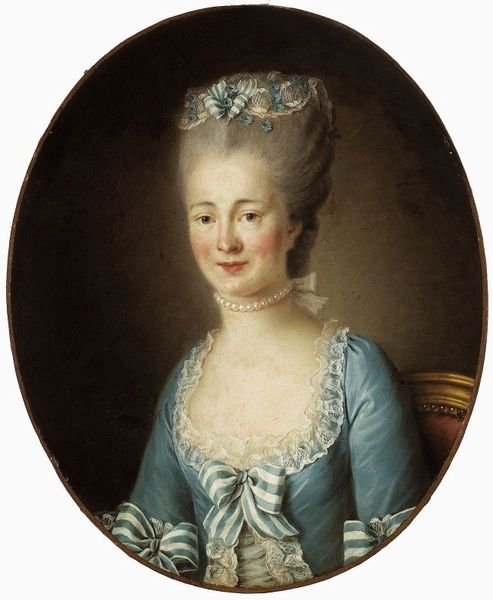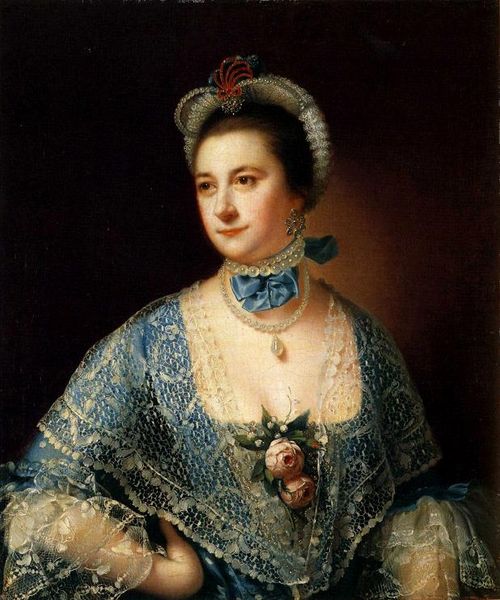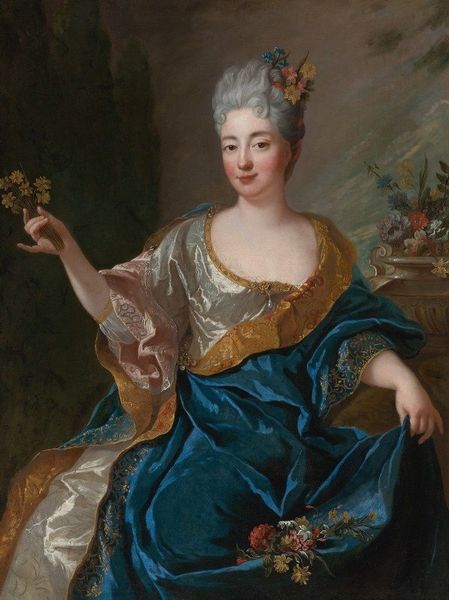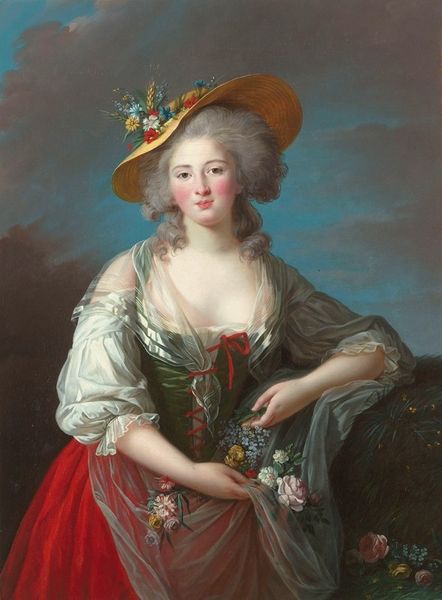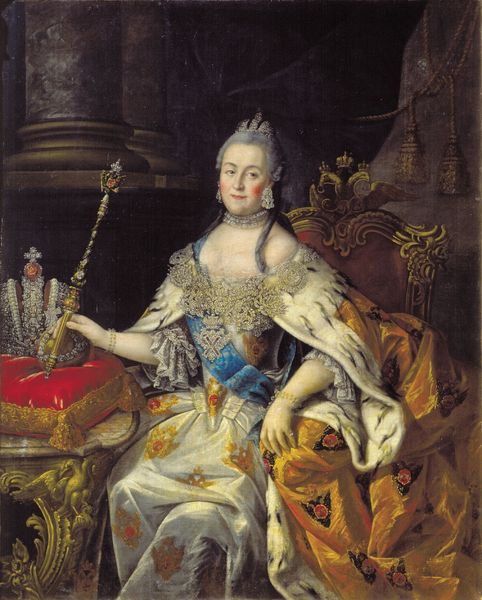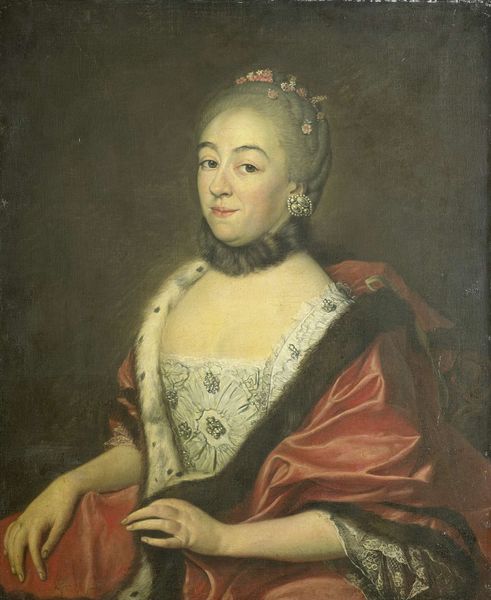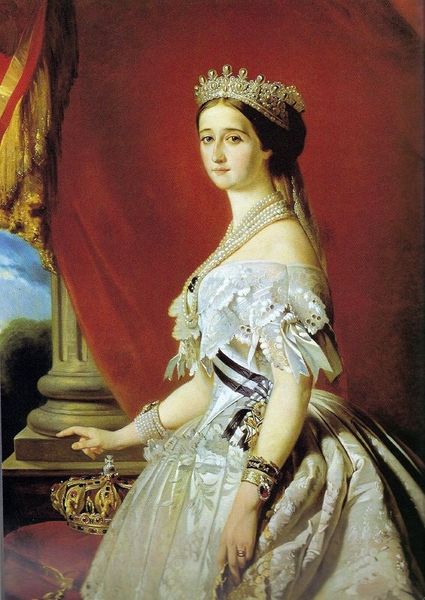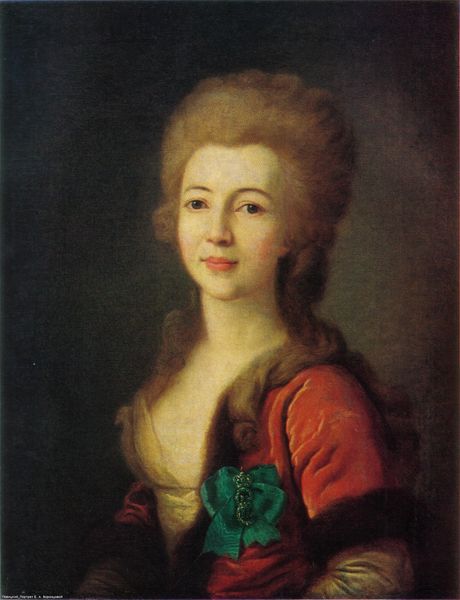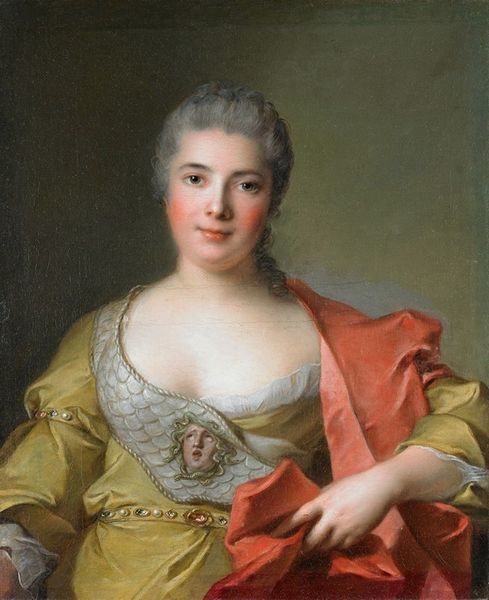
Copyright: Public domain
Editor: This portrait of Catherine I of Russia, rendered in oil paint by Ivan Nikitin in 1717, is incredibly striking. The richness of the fabrics contrasts with the Empress’s almost plain expression. What resonates with you as you examine this painting? Curator: Well, beyond the surface representation, consider what the portrait *withholds*. We see Catherine enveloped in sumptuous fabrics, symbols of power, but there’s also a sense of deliberate obscuring. It’s a carefully constructed image meant to project authority, yet it hints at a more complex, perhaps even uncertain, interior. Editor: Uncertain? Why do you say that? Curator: The crown just slightly visible in the background feels less like a confident statement of sovereignty and more like a theatrical prop. This reminds us of how visual symbols accrue power – they rely on our understanding of established visual languages, in this case, imperial regalia, but they also allow for the artist to inject subtle emotional layers, perhaps reflecting the sitter's personality, insecurities, or ambitions. It asks us to delve into Russia's cultural memory and what defined its political imagery. Editor: That's interesting. So the portrait isn’t just a likeness, it’s an argument? Curator: Precisely! Every carefully chosen object, from the fabric's drape to the slight pursing of her lips, creates an intricate dialogue. The symbols present shape our understanding of Catherine as an Empress. Consider her gaze, directed toward the viewer; what does her expression convey? Does it invite or repel? Editor: It’s subtle, almost ambiguous… like she’s guarding something. Curator: Precisely. Images like this served as blueprints for projecting and solidifying power. Examining these visual tools unlocks not only an understanding of the sitter, but the surrounding culture that generated it. Editor: I never thought of a portrait as something so… coded. Thanks for illuminating that! Curator: My pleasure. Each element, each symbol, echoes the historical, psychological, and emotional context that informed it. Learning to see those echoes transforms the act of viewing into an act of cultural recovery.
Comments
No comments
Be the first to comment and join the conversation on the ultimate creative platform.
